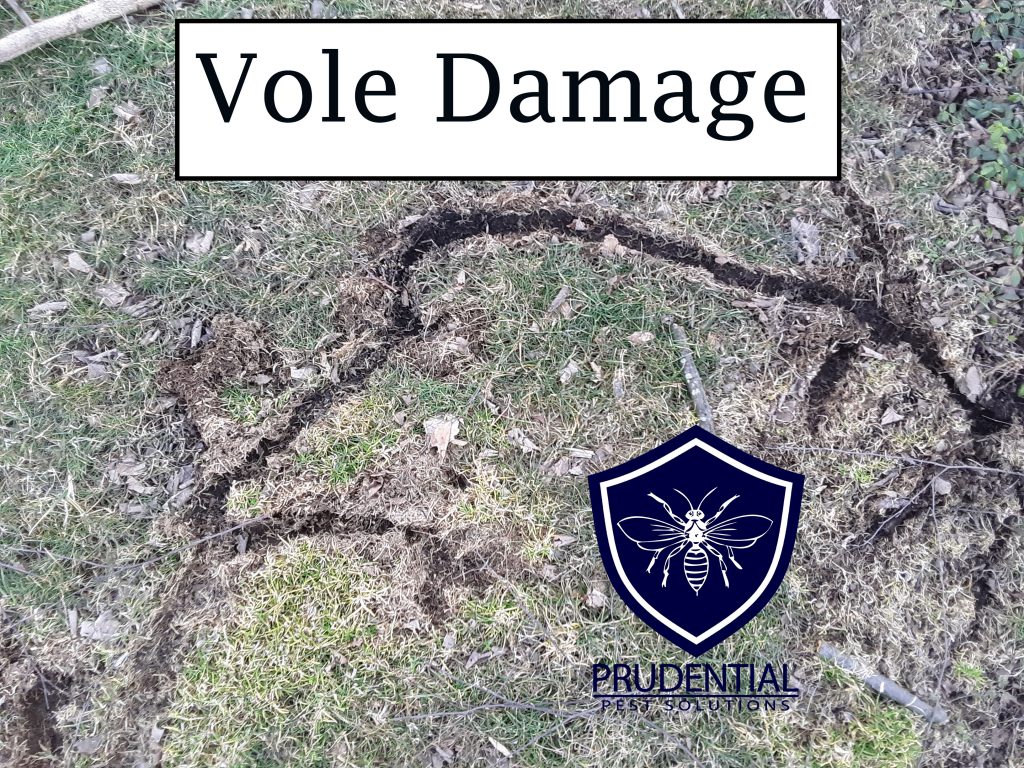Grasping Vole Insect Control: Comprehensive Insights on Problem Prevention and Therapy Methods
By recognizing the subtle indicators of vole problem early on, we can take proactive steps to stop extensive damage. In this discussion, we will check out the subtleties of vole actions, dive into the identification of infestation signs, and discover the most effective avoidance and therapy techniques.
Recognizing Vole Actions
Examining the foraging patterns of voles supplies useful understandings right into their habits and habitat preferences. By observing their foraging actions, scientists can acquire a much better understanding of where voles choose to establish their environments and the level of their environmental effect.
Research shows that voles exhibit careful feeding behaviors, preferring seeds, tubers, and origins - vole lawn damage. This dietary choice affects their foraging patterns, leading them to areas rich in vegetation and ground cover. In addition, voles are understood to create sophisticated passage systems for foraging and nesting functions, suggesting a high level of adaptability to their environments
Understanding vole habits is vital for implementing targeted bug control steps that interrupt their habitat preferences and foraging tasks. By studying their habits, experts can establish extra efficient avoidance and therapy strategies to handle vole invasions.
Identifying Indicators of Vole Infestation
Vole problems can be discovered by recognizing certain indications of their presence in an area. Among the most usual indicators of a vole infestation is the existence of surface area runways. Voles produce networks of slim pathways on the ground that are normally around 2 inches broad. These paths are usually found in verdant locations or beneath mulch or ground cover where voles can relocate openly and look for food.
One more crucial indication of vole infestation is the existence of small burrow openings in the ground. Voles dig superficial burrow systems with numerous entries and departures. These burrows serve as shelter and nesting websites for the voles. Additionally, voles are recognized to leave chewed plant stems, roots, and bulbs near their burrow openings, indicating their feeding activity in the location.
In addition, vole droppings can additionally indicate their visibility (vole pest control). Vole droppings are tiny, brown, and cylindrical fit, appearing like grains of rice. Locating these droppings along paths or near burrow openings can confirm a vole infestation. By being watchful for these indications, homeowner can quickly resolve vole problems and stop further damages.
Executing Aggressive Prevention Measures
To successfully alleviate the risks associated with vole invasions, residential or commercial property proprietors can proactively apply a variety of preventative steps aimed at securing their landscapes and yards. Additionally, keeping yard areas tidy and decreasing mess where voles can conceal or nest is important in decreasing their visibility.
Furthermore, employing natural vole deterrents like castor oil-based repellents or predator urine can serve as effective safety nets. It is also advisable to frequently inspect exterior areas for any kind of signs of vole task, such as paths or tunnel openings, to attend to prospective invasions promptly. By embracing these proactive prevention techniques, homeowner can dramatically reduce the chance of vole damage and maintain the health and appearances of their landscapes.
Reliable Treatment Techniques
Integrating targeted trapping approaches and utilizing authorized rodenticides are essential parts Read Full Report of efficient therapy techniques for managing vole invasions. Trapping can be an efficient means to reduce vole populations, especially when positioned tactically in their active paths. Snap traps and live catches can both work, with the latter enabling the capture and relocation of voles. When using rodenticides, it is crucial to comply with safety standards to avoid damage to non-target pets and pet dogs. Place rodenticides in safe lure stations to lessen dangers to unintentional targets. In addition, habitat adjustment, such as reducing ground cover and getting rid of sources of food, can aid discourage voles from infesting an area. Regular monitoring and upkeep are likewise essential aspects of successful therapy techniques to make certain that vole populations are maintained under control. By combining capturing, rodenticides, habitat alteration, and consistent tracking, reliable vole insect control can be accomplished.

Tracking and Upkeep Tips
Preserving an organized routine for tracking and carrying out regular maintenance activities is essential to sustain the effectiveness of vole insect control steps. Regular monitoring permits the very early discovery of vole activity, enabling prompt treatment before invasions intensify. To effectively monitor vole populations, strategically positioned traps can be made use of in vole paths or near burrow entryways. By on a regular basis inspecting these traps, home owners can evaluate the level of vole activity and adjust control strategies accordingly.
Additionally, preserving a tidy and clean landscape is vital in vole prevention. Cleaning away debris, such as heaps of wood or thick greenery, removes prospective vole environments. Frequently cutting and mowing grass vegetation aids reduce vole concealing areas and reduces their access to food sources.

Final Thought
In verdict, mastering vole pest control needs a strong understanding of vole actions, the ability to identify indicators of problem, carrying out aggressive prevention steps, reliable therapy strategies, and regular tracking and upkeep. By taking an extensive technique to vole control, people can efficiently manage and prevent invasions, ultimately safeguarding their residential or commercial property and surrounding setting from damage triggered try this web-site by these tiny rats.
In this conversation, we will certainly explore the nuances of vole actions, delve right into the recognition of problem indications, and discover the most reliable prevention and treatment techniques.Including targeted capturing methods and utilizing accepted rodenticides are vital components of effective therapy approaches for managing vole infestations. To properly check vole populations, strategically put catches can be used in vole paths or near burrow entries. Examining and repairing any problems to these structures ensures that vole control remains effective in safeguarding residential or commercial properties from problems. By including these tracking and upkeep practices right into an extensive vole insect control strategy, people can properly manage vole populaces check my source and secure their homes from damages.